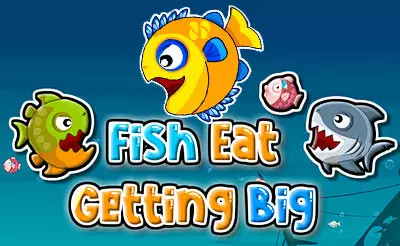In a world increasingly defined by digital screens, urban sprawl, and artificial intelligence, a new term has begun to echo through the corridors of culture and consciousness: zooskooñ. Though not yet in mainstream dictionaries, zooskooñ captures a deep, almost aching emotion—a kind of nostalgic longing for an intimate connection with the wild, a desire to reclaim the unfiltered experience of nature that modern life seems to obscure.
Rooted in ancient instincts and shaped by the psychological impact of disconnection from the natural world, zooskooñ represents a rising tide of sentiment that is reshaping art, travel, psychology, and even politics. But what exactly is zooskooñ? Where does it come from, and why does it resonate so powerfully today?
Defining Zooskooñ
Zooskooñ (pronounced zohs-koon) is a neologism, likely derived from a blend of Greek and Basque roots—zoo- (from the Greek zōion, meaning animal or life) and -skoñ, an invented suffix evoking emotion, nostalgia, or yearning. In essence, zooskooñ captures the emotional state of longing for wildness—not just to observe nature, but to be part of it. It’s a call from the subconscious, a whisper from our evolutionary past, where humans once roamed alongside animals, engaged in a symbiotic dance with Earth’s ecosystems.
While similar to concepts like biophilia (the innate human love for nature) or solastalgia (the emotional distress caused by environmental change), zooskooñ is unique in its emphasis on wild connection—untamed, unpredictable, and raw. It’s the emotional echo of our ancestral selves that once thrived in forests, deserts, and savannahs, long before concrete jungles replaced natural ones.
The Psychology Behind the Yearning
Modern psychology increasingly recognizes the cost of our disconnection from nature. Urbanization, while offering convenience and economic opportunity, has distanced us from the very environments in which our bodies and minds evolved. Studies show that people who spend more time in green spaces have lower rates of anxiety, depression, and stress-related disorders.
But zooskooñ is more than just a desire for greenery or a hike in the park. It is an emotional hunger for unpredictability, survival instincts, and a sense of primal purpose—experiences that our sanitized, climate-controlled lives often lack. This craving can manifest as a fascination with wilderness survival shows, a passion for wildlife photography, or even dreams of quitting city life for a cabin in the woods.
For many, zooskooñ surfaces when confronted with images or stories of vanishing wildlife, melting ice caps, or deforested landscapes. It is not merely sorrow for the loss of nature, but a personal loss, as though part of our identity has been severed from its roots.
Zooskooñ in Popular Culture
From blockbuster films like Into the Wild and The Revenant to bestselling books like Where the Crawdads Sing or Braiding Sweetgrass, pop culture has begun reflecting this deeper craving for natural, untamed experiences. The rise of eco-centric influencers, bushcraft YouTubers, and nature-based wellness retreats is further testament to the phenomenon.
Music too reflects zooskooñ. Folk, ambient, and world music genres increasingly incorporate sounds of the wild—howling wolves, rustling leaves, ocean waves—tapping into our unconscious yearning to feel part of a grander, non-human symphony.
Even in virtual realms, games like The Legend of Zelda: Breath of the Wild or Red Dead Redemption 2 attract millions with their rich, immersive wilderness settings, allowing players to digitally experience zooskooñ in simulated form.
Spiritual and Philosophical Dimensions
Zooskooñ touches on something sacred. Indigenous and earth-based spiritualities have long emphasized the interdependence of all living things, and many of these traditions resonate deeply with people experiencing this wild longing. To them, zooskooñ might be seen not just as nostalgia but as a soul calling—a reminder of humanity’s forgotten role as guardian and participant in Earth’s web of life.
Philosophers like Henry David Thoreau, John Muir, and Aldo Leopold wrote passionately about the spiritual necessity of wilderness, long before zooskooñ had a name. Today, their words feel even more relevant, as climate change and mass extinction challenge the very future of wildness on Earth.
Zooskooñ and the Climate Crisis
The climate crisis has amplified feelings of ecological grief, but zooskooñ differs in tone. While ecological grief focuses on loss and mourning, zooskooñ is more future-facing—a hunger to reconnect, to rediscover what we might still preserve. It is a motivator, not just a lament.
Activists, especially among younger generations, often speak of a personal, emotional connection to the Earth as their reason for fighting climate change. Zooskooñ lies at the heart of this motivation. It is the emotion behind decisions to rewild urban spaces, protect endangered species, and adopt more sustainable lifestyles.
Movements like “rewilding,” permaculture, or even regenerative agriculture reflect this ethos. They are not just practical solutions—they are expressions of zooskooñ in action.
Rewilding the Self
To experience zooskooñ is to feel out of place in modernity. It raises existential questions: What does it mean to be human in an artificial age? Can we return to a more authentic state of being without abandoning the progress civilization has made?
Some individuals answer this call through radical means—off-grid living, wilderness therapy, or extended solo treks. Others integrate it more subtly: morning forest walks, foraging courses, or animal tracking workshops. Zooskooñ does not demand that we revert to a prehistoric lifestyle, but it invites us to remember what that life offered: presence, risk, reciprocity, and wonder.
How to Embrace Zooskooñ
If you feel the stirrings of zooskooñ in your own life, you’re not alone. Here are a few ways to explore and nurture this feeling:
- Spend Unstructured Time in Nature: Go beyond planned hikes or guided tours. Let yourself be led by curiosity, as your ancestors once did.
- Study Ancestral Skills: Learn primitive crafts, shelter-building, fire-making, or natural navigation. These practices awaken dormant knowledge.
- Observe Wildlife Mindfully: Whether birds, insects, or mammals, watching wild animals teaches patience, humility, and attentiveness.
- Create Nature-Based Art: Express zooskooñ through painting, poetry, music, or sculpture. Let your creative self commune with the wild.
- Advocate for Wild Spaces: Support conservation efforts, rewilding projects, and policies that protect biodiversity.
Conclusion: A New Word for an Ancient Feeling
Zooskooñ might be a new word, but the emotion it captures is as old as humanity itself. In a time when the pace of life feels frantic and artificial, this primal yearning is more than a curiosity—it is a compass pointing us back to balance, humility, and ecological belonging.
To feel zooskooñ is not weakness; it is a sign that our hearts still remember. In that memory lies hope—not just for our mental and spiritual health, but for the planet we still call home.







